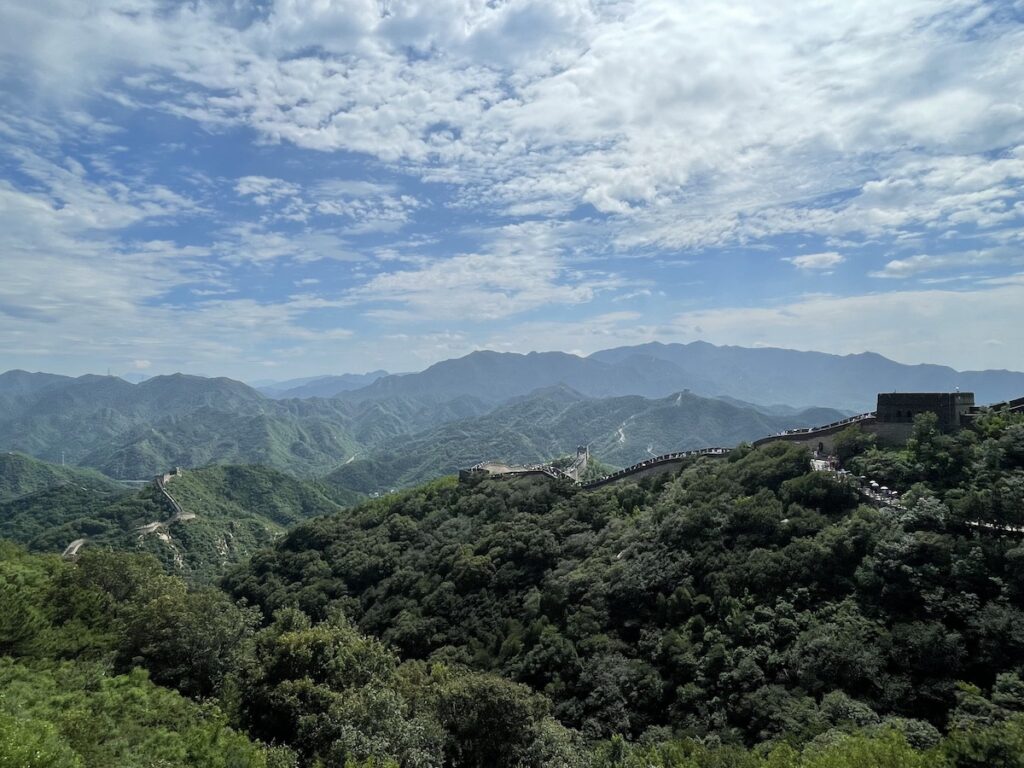Is there a location that says “iconic China” any more than the Great Wall? No other site is as wrapped up with Chinese national identity or foreigners’ expectations of the country. I’m happy to say that after almost three years, I’ve finally visited the Great Wall of China near Beijing. I can safely say it really is pretty great.
A Brief History of the Great Wall of China
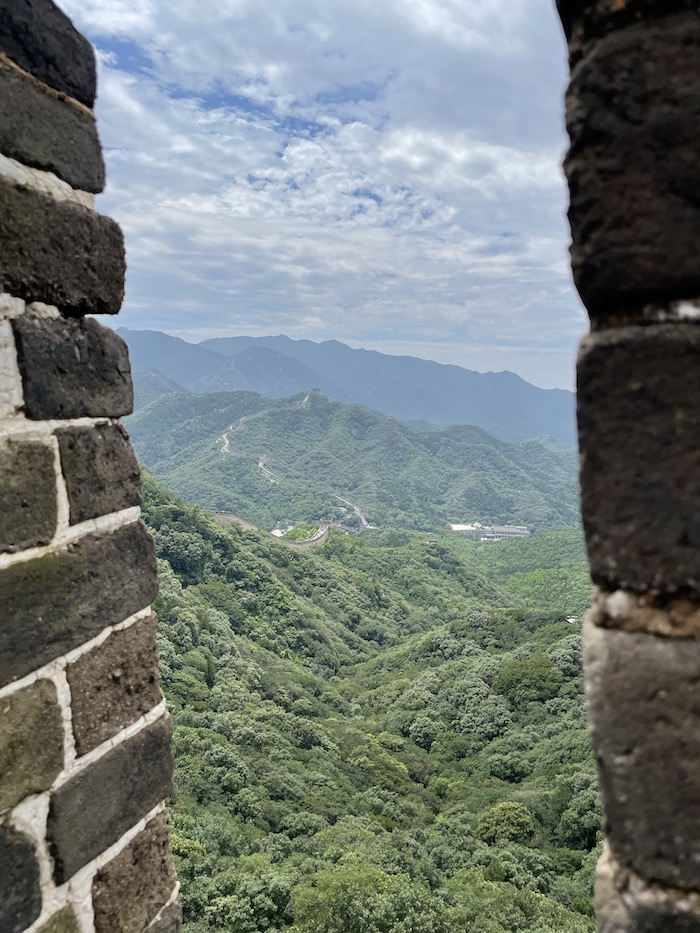
The Great Wall of China was slowly pieced together over thousands of years. Before China was China, it was divided into separate warring kingdoms. Each little kingdom had its own set of walls and fortifications.
In 221 BCE, the emperor of the Qin dynasty united those separate little kingdoms into China. He also linked a lot of those early walls together (while tearing down others) in order to protect China’s northern border against the nomadic Xiongnu tribe.
China went through all sorts of dynasties, kingdoms, and other ups and downs over the next 1,700 years or so, as did the Great Wall itself. The Ming Dynasty built most of the wall that remains today. The most easily visited sections near Beijing were built and fortified during the reign of the Hongzhi emperor between 1487 and 1505.
After the Qing dynasty took over in 1636, the wall fell into disrepair and neglect. The Great Wall of China started to become a tourist hotspot after the Opium Wars in the late 1800s. During the Cultural Revolution in the 1970s, locals were encouraged to use bricks from the wall to build houses and roads. However, the Wall’s historical significance was eventually recognized. It was protected as a cultural relic, and soon became China’s top tourist destination and a Unesco World Heritage site.
Chairman Mao once famously said “不到长城非好汉.” This gets roughly translated as “he who doesn’t reach the Great Wall is no hero” or “he who doesn’t climb the Great Wall is not a true man.” All the more reason to go visit.
How to Get to the Great Wall from Beijing
If Mao’s words have inspired you, it’s actually pretty easy to get to the Great Wall of China from downtown Beijing. There are numerous sections you can visit: Badaling, Mutianyu, Simatai, Jiankou, and so on. This website has more details comparing the different sections of the Great Wall in Beijing.
The Badaling section is the closest and easiest to get to from the city. It is easily the most famous and also most developed section of the Wall. It also has the most tourists.
Travelchinaguide also has some detailed instructions on how to get to the Badaling section by bus and by train. So, that’s there if that’s something you want to do.
If you are lazy, like me, you can always book a tour. There are hundreds of tour operators out there. Just be sure to avoid the tours that also drag you to any pottery or jewelry “workshops” or “factories.” Those are really just high-pressure souvenir shops.
The wall itself is pretty inexpensive. It’s only 40 yuan during the high season (that’s a little over $6). The cable car costs 140 ($21) round trip. Those things should be included with the cost of your tour if you decide to be lazy and do that.
What to Bring to Visit the Great Wall?
If you’re going to a well-touristed section, you really don’t need to bring much. Keep in mind that the wall is up in the mountains, so the weather can be quite a bit different than in downtown Beijing. Here’s what we brought with us to the Great Wall:
- Hats and sunscreen – It got pretty sunny. There isn’t any shade when you’re walking along the ramparts of the wall.
- Comfortable shoes – You’ll be doing a lot of walking. A lot. Most of the Badaling section is pretty flat, but there are some steep parts. You’ll want to focus on the views, not your sore feet.
- Camera/Phone – How are you going to impress your Instagram followers if you don’t take pictures? Leave the drones at home, though.
- Snacks – There are snack shops at the base of the Great Wall, which weren’t too expensive. There’s even a little fruit stand. I’d suggest getting some food and having a picnic on the wall.
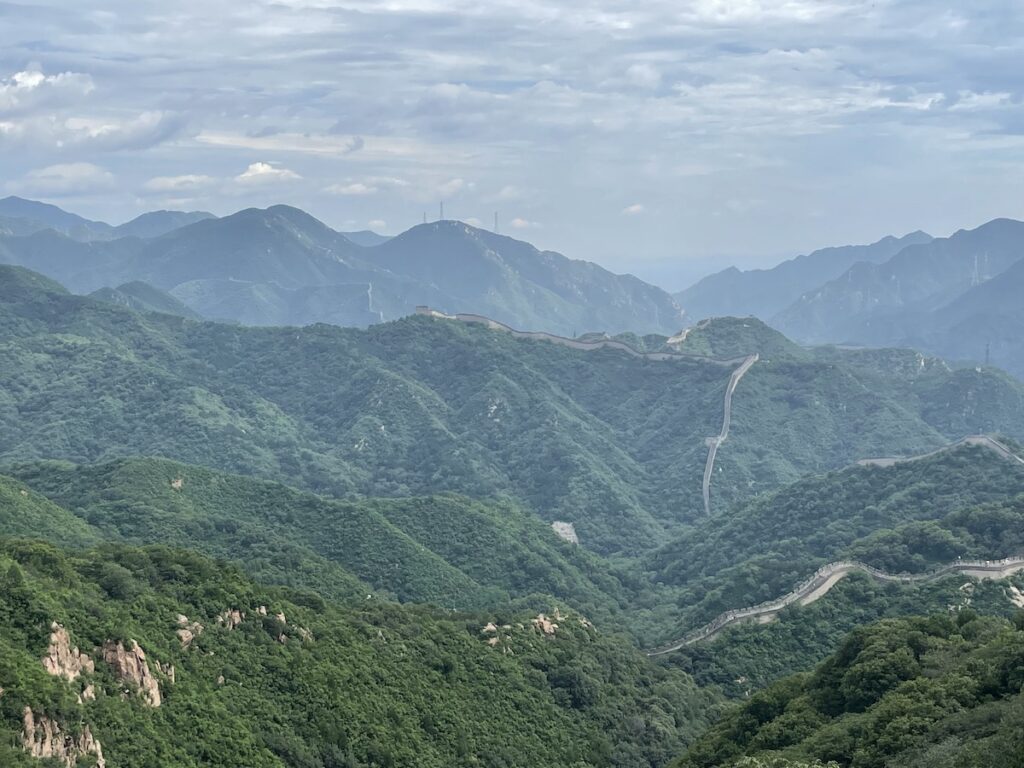
Braving the Crowds of Badaling
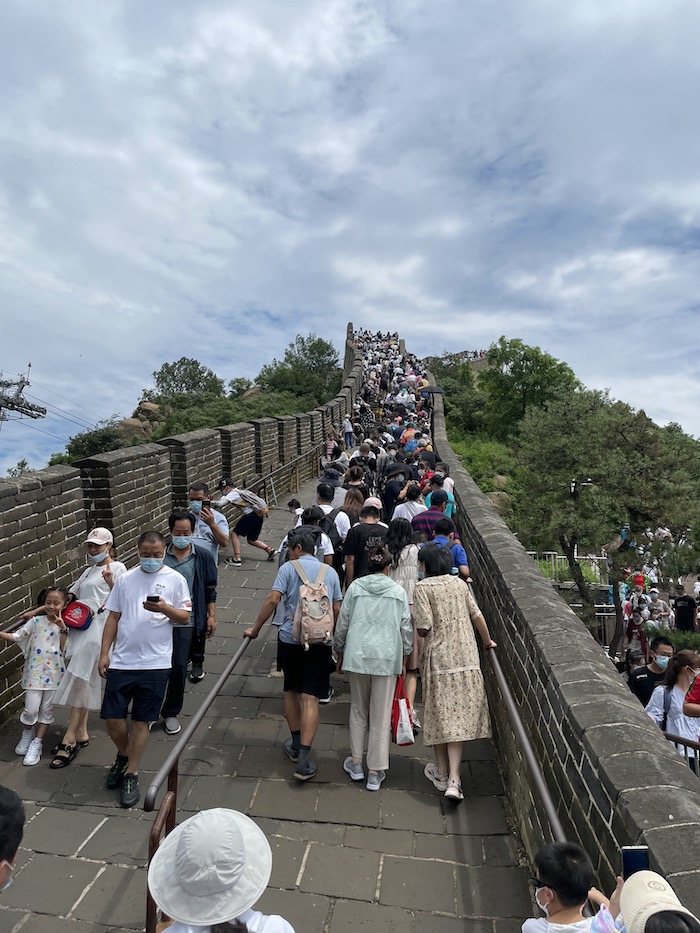
Okay, enough of the practical travel information. What was visiting the Great Wall of China actually like?
We had been warned away from Badaling numerous times. “It’s too crowded,” they said. “You can’t even move there are so many people,” they said. “It’s just too damn touristy and it isn’t worth it.” Badaling has a reputation as being the absolute worst section of the Great Wall of China in Beijing. Of course, that’s the section of the wall we ended up going to.
At first, we booked a tour to the much less crowded Mutianyu section through a company called Mubus. I would recommend them, by the way. Unfortunately, heavy rainstorms sent us out to dreaded Badaling instead.
Yes, the place was crowded. It’s a major tourist destination in the middle of the high summer travel season, what’d you expect? However, I didn’t think the crowds diminished the beauty or awe-inspiringness of the Great Wall in any way. Maybe the Great Wall is such a magnificent sight that no amount of jostling by other tourists can diminish it. Maybe we’ve just been in China too long. Either way, it was pretty great.
Now, I’m not going to lie. We never had the wall to ourselves. But we were able to sneak away for a few less crowded moments. There’s a guard tower with a plaque at Badaling where Mao supposedly said his famous quote about the wall. This guard tower is a sort of pilgrimage point for many Chinese people. The path up to that section was packed asses to elbows. The trick is to just walk in the other direction.
It’s Great!
The Great Wall of China is pretty impressive even covered with tourists. I always feel amazed standing in or on ancient archeological sites, imagining what life might have been like for the people that built and worked at these places five hundred years ago. But, I’m a nerd like that.
Even if you don’t care about our shared human heritage, or history, or whatever, the Great Wall is still gorgeous. The wall climbs along the spine of the mountains. The rain did a lot to enhance the area’s beauty. The trees were all vibrant green, and the yellow-brown bricks, towers, and ramparts of the wall really pop against all that green. It’s one of those places that looks great in pictures, but even better in real life.
There are walls, and there are walls. As far as walls go, this one stands out as one of the best. The next time you’re in Beijing, do yourself a favor and visit the Great Wall of China.
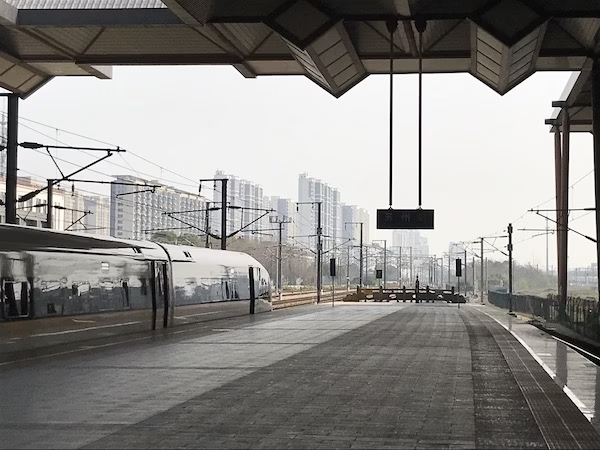
Need Train Tickets in China?
China’s high speed rail network is fast and efficient, but it’s difficult for non-Chinese citizens to get tickets. Fortunately, Trip.com makes buying train tickets as hassle free as traveling through China can possibly be. Click the link below to get your Chinese train tickets. If you buy your train tickets using the link, I’ll receive a small commission and you’ll feel good knowing you’ve helped out an independent blogger.
